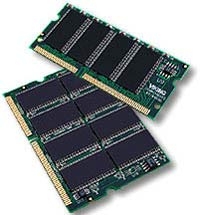India is no longer just the world’s massive outsourcing hub; it is now attracting top IT talent from the United States along with unprecedented investment from giants like Microsoft and Intel.
 |
|
Infosys, one of the leading IT consulting firms based in Bangalore, also has a headquarters in the United States. |
Erik Simonsen, who holds an MBA from New York University, made the bold decision to travel halfway around the world to work in India. He chose Copal Partners, a small tech firm near New Delhi, turning down offers from multiple companies in Silicon Valley and the East Coast. Explaining his choice, Erik noted that the U.S. market has become saturated and “stagnant,” while India remains vibrant with “room to flourish.”
“This is an opportunity to relive the dot-com boom in the U.S. during the late ’90s. Companies here (in India) are growing at an astonishing rate,” Erik enthusiastically shared.
Global Experience
Erik is not an isolated case. An increasing number of students and graduates in science, business, and technology from prestigious universities, often referred to as “golden deer” from the U.S., are backpacking to South Asia for work. What they seek is a new frontier and international work experience.
 “Applying what we’ve learned has become the number one demand for American students over the past five years. India is particularly attractive due to its strong English-speaking environment. This contrasts with China, where American students often face language barriers. As George Day, a professor at the Wharton School of Pennsylvania, puts it, China is like a giant machine, but India is the locomotive.”
“Applying what we’ve learned has become the number one demand for American students over the past five years. India is particularly attractive due to its strong English-speaking environment. This contrasts with China, where American students often face language barriers. As George Day, a professor at the Wharton School of Pennsylvania, puts it, China is like a giant machine, but India is the locomotive.”
U.S. universities are also recognizing this demand, and they assess that emerging Asian markets are the most attractive. Last summer, Yale University President Richard Levin led a team of 12 experts to India to establish partnerships with several universities there. In 2005, 30 Yale interns went to India, and next year, that number is expected to rise to 50.
The year 2006 will also see the first cohort of doctoral candidates from the Massachusetts Institute of Technology’s India program defending their dissertations in science and economics. “MIT sends students here because they recognize the global work environment in India. But more importantly, it’s about trust,” said Deepti Nijhawan, who oversees the training program in India.
A New Battleground for Giants
Last week, within just a few days, two American tech giants, Microsoft and Intel, made announcements that sent ripples across both sides of the ocean. An unprecedented investment will be poured into the research and development centers of these companies in India.
 Specifically, on December 7, Microsoft Chairman Bill Gates announced that the company would invest $1.7 billion in Microsoft India over the next four years. Half of this amount will be allocated to the Research and Development center in Hyderabad, Microsoft’s second-largest branch worldwide, following its headquarters in Redmond, Washington. Gates remarked that “India has emerged as a new Mecca for high-tech investment.”
Specifically, on December 7, Microsoft Chairman Bill Gates announced that the company would invest $1.7 billion in Microsoft India over the next four years. Half of this amount will be allocated to the Research and Development center in Hyderabad, Microsoft’s second-largest branch worldwide, following its headquarters in Redmond, Washington. Gates remarked that “India has emerged as a new Mecca for high-tech investment.”
Just days earlier, Intel Chairman Craig Barrett also announced that his company would invest $1.1 billion in this South Asian nation. In October, networking giant Cisco Systems revealed it would invest over $1 billion in India over three years—this is the largest investment outside of the U.S. in the company’s history.
What is noteworthy is that all this funding is directed toward research, innovation, and design, requiring a highly skilled workforce of engineers and experts, rather than the manual labor jobs that previously defined India’s reputation.
It’s not just American companies setting up operations in India that are attracting U.S. engineers; American students studying in India are also gaining professional experience within local companies. Tim Hentzel (30), an MBA student at Wharton, first came to India in 2004 as part of a three-week “international internship” program. Infosys, an IT and consulting firm, immediately captivated Tim, as it draws talent and interns from all over the globe. “A truly global environment,” Tim exclaimed.
Moreover, Tim was pleasantly surprised by the “corporate culture” there, where interns participate in significant projects, are evaluated on par with their mentors, and can meet and engage with company leaders at any time.
“India is at the forefront of modern technology.” Without hesitation, Tim called this his “best decision ever.”
Future Strategy
Navi Radjou, a specialist at Forrester Research, shared: “If you ask General Electric, they will say that up to 60% of the company’s future revenue will come from emerging markets like India and China. If you are young and aspire to become a big boss in the future, it is best to start understanding that 60% right now.”
However, to attract even more talent, India needs to improve its relatively underdeveloped and inconsistent infrastructure. “If you want to build a chip manufacturing plant, you need stable electricity, and you need transportation to move chips. And if you want to attract talent from more developed countries, you need to meet their housing needs and provide quality schools for their children.”
Returning to Erik Simonsen’s story: starting as an intern at Copal Partners, Erik was promoted to Senior Vice President of IT, Recruitment, and Management in just a month. He was genuinely amazed by this, stating, “I have never had such a significant responsibility at a U.S. company—Copal expanded its workforce by 300% in just six months. If this were in the U.S., you’d be filled with skepticism. But once you come here, you understand.”
Thiên Ý





















































